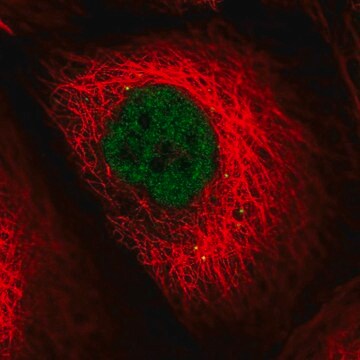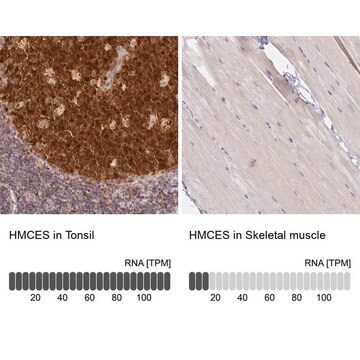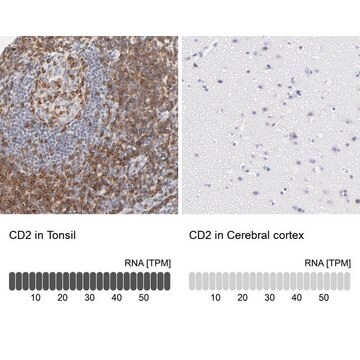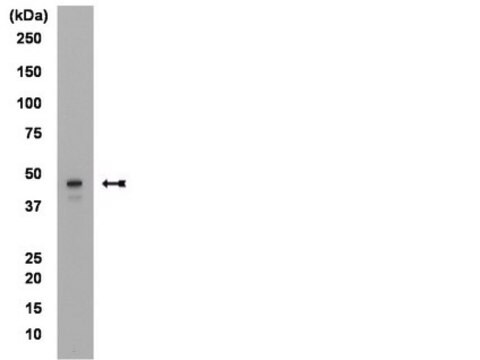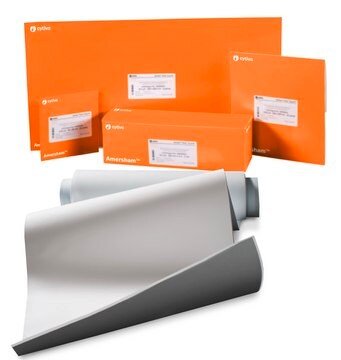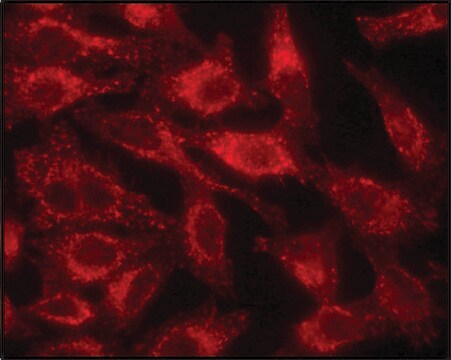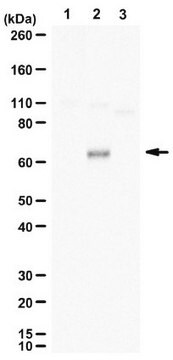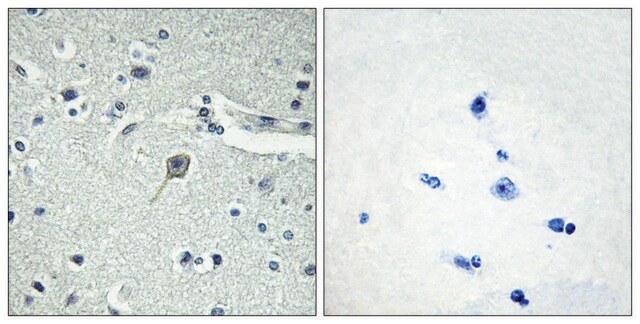HPA001334
Anti-LIG4 antibody produced in rabbit
Prestige Antibodies® Powered by Atlas Antibodies, affinity isolated antibody, buffered aqueous glycerol solution
同義詞:
Anti-DNA ligase 4 antibody produced in rabbit, Anti-DNA ligase IV antibody produced in rabbit, Anti-Polydeoxyribonucleotide synthase [ATP] 4 antibody produced in rabbit
登入查看組織和合約定價
全部照片(8)
About This Item
推薦產品
生物源
rabbit
品質等級
共軛
unconjugated
抗體表格
affinity isolated antibody
抗體產品種類
primary antibodies
無性繁殖
polyclonal
產品線
Prestige Antibodies® Powered by Atlas Antibodies
形狀
buffered aqueous glycerol solution
物種活性
mouse, rat, human
技術
immunohistochemistry: 1:200- 1:500
免疫原序列
TYCVIAGSENIRVKNIILSNKHDVVKPAWLLECFKTKSFVPWQPRFMIHMCPSTKEHFAREYDCYGDSYFIDTDLNQLKEVFSGIKNSNEQTPEEMASLIADLEYRYSWDCSPLSMFRRHTVYLDSYA
UniProt登錄號
運輸包裝
wet ice
儲存溫度
−20°C
目標翻譯後修改
unmodified
基因資訊
human ... LIG4(3981)
免疫原
DNA ligase 4 recombinant protein epitope signature tag (PrEST)
應用
Anti-LIG4 antibody produced in rabbit, a Prestige Antibody, is developed and validated by the Human Protein Atlas (HPA) project . Each antibody is tested by immunohistochemistry against hundreds of normal and disease tissues. These images can be viewed on the Human Protein Atlas (HPA) site by clicking on the Image Gallery link. The antibodies are also tested using immunofluorescence and western blotting. To view these protocols and other useful information about Prestige Antibodies and the HPA, visit sigma.com/prestige.
生化/生理作用
LIG4 (ligase IV) gene encodes a DNA ligase that links single-strand breaks in a double-stranded polydeoxynucleotide. The reaction is ATP-dependent. It is involved in the ligation step during non-homologous DNA end joining (NHEJ) and V(D)J recombination. NHEJ pathway repairs double-strand DNA breaks while V(D)J recombination involves the breakage and rejoining (dependent on NHEJ) of double-strand DNA.The protein forms a complex with the X-ray repair cross complementing protein 4 (XRCC4), which improves the joining activity of LIG4. This complex interacts with DNA-dependent protein kinase complex DNA-PK. This interaction is required for NHEJ. Defects in this gene cause LIG4 syndrome, characterized by immunodeficiency and developmental and growth delay.
特點和優勢
Prestige Antibodies® are highly characterized and extensively validated antibodies with the added benefit of all available characterization data for each target being accessible via the Human Protein Atlas portal linked just below the product name at the top of this page. The uniqueness and low cross-reactivity of the Prestige Antibodies® to other proteins are due to a thorough selection of antigen regions, affinity purification, and stringent selection. Prestige antigen controls are available for every corresponding Prestige Antibody and can be found in the linkage section.
Every Prestige Antibody is tested in the following ways:
Every Prestige Antibody is tested in the following ways:
- IHC tissue array of 44 normal human tissues and 20 of the most common cancer type tissues.
- Protein array of 364 human recombinant protein fragments.
聯結
Corresponding Antigen APREST78242
外觀
Solution in phosphate-buffered saline, pH 7.2, containing 40% glycerol and 0.02% sodium azide
法律資訊
Prestige Antibodies is a registered trademark of Merck KGaA, Darmstadt, Germany
免責聲明
Unless otherwise stated in our catalog or other company documentation accompanying the product(s), our products are intended for research use only and are not to be used for any other purpose, which includes but is not limited to, unauthorized commercial uses, in vitro diagnostic uses, ex vivo or in vivo therapeutic uses or any type of consumption or application to humans or animals.
未找到適合的產品?
試用我們的產品選擇工具.
儲存類別代碼
10 - Combustible liquids
水污染物質分類(WGK)
WGK 1
個人防護裝備
Eyeshields, Gloves, multi-purpose combination respirator cartridge (US)
Emil Mladenov et al.
Nucleic acids research, 48(4), 1905-1924 (2019-12-14)
In vertebrates, genomic DNA double-strand breaks (DSBs) are removed by non-homologous end-joining processes: classical non-homologous end-joining (c-NHEJ) and alternative end-joining (alt-EJ); or by homology-dependent processes: gene-conversion (GC) and single-strand annealing (SSA). Surprisingly, these repair pathways are not real alternative options
U Grawunder et al.
Molecular cell, 2(4), 477-484 (1998-11-11)
Nonhomologous DNA end joining (NHEJ) is the major pathway for repairing double-strand DNA breaks. V(D)J recombination is a double-strand DNA breakage and rejoining process that relies on NHEJ for the joining steps. Here we show that the targeted disruption of
Sohee Jun et al.
Nature communications, 7, 10994-10994 (2016-03-25)
Despite the implication of Wnt signalling in radioresistance, the underlying mechanisms are unknown. Here we find that high Wnt signalling is associated with radioresistance in colorectal cancer (CRC) cells and intestinal stem cells (ISCs). We find that LIG4, a DNA
M O'Driscoll et al.
Molecular cell, 8(6), 1175-1185 (2002-01-10)
DNA ligase IV functions in DNA nonhomologous end-joining and V(D)J recombination. Four patients with features including immunodeficiency and developmental and growth delay were found to have mutations in the gene encoding DNA ligase IV (LIG4). Their clinical phenotype closely resembles
L Chen et al.
The Journal of biological chemistry, 275(34), 26196-26205 (2000-06-16)
The DNA-dependent protein kinase (DNA-PK), consisting of Ku and the DNA-PK catalytic subunit (DNA-PKcs), and the DNA ligase IV-XRCC4 complex function together in the repair of DNA double-strand breaks by non-homologous end joining. These protein complexes are also required for
我們的科學家團隊在所有研究領域都有豐富的經驗,包括生命科學、材料科學、化學合成、色譜、分析等.
聯絡技術服務